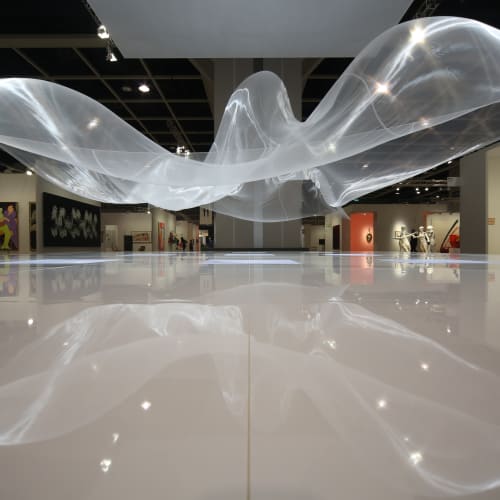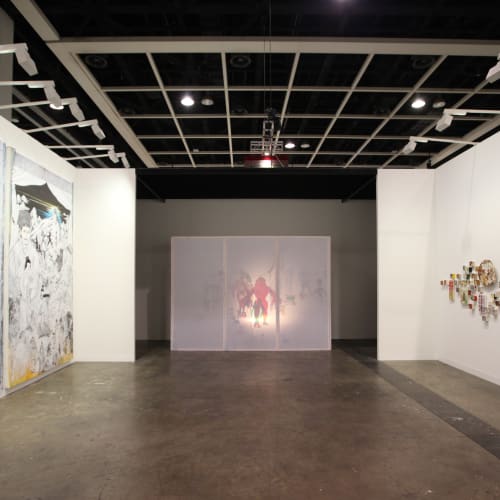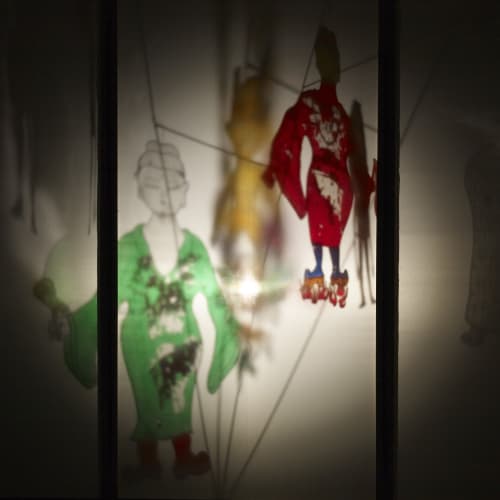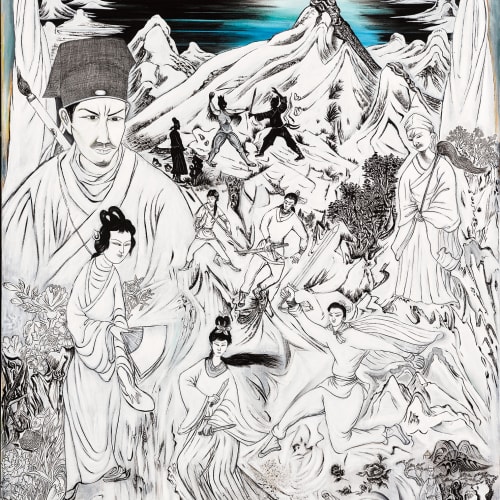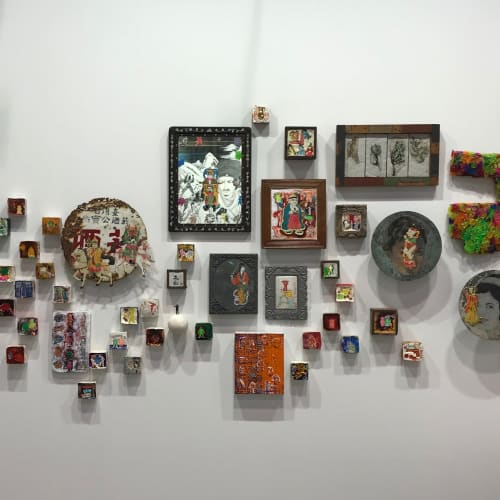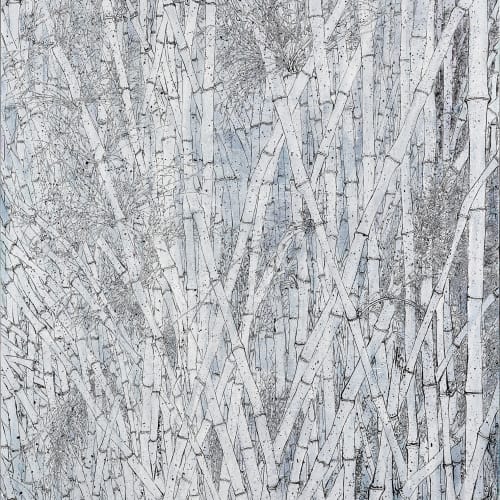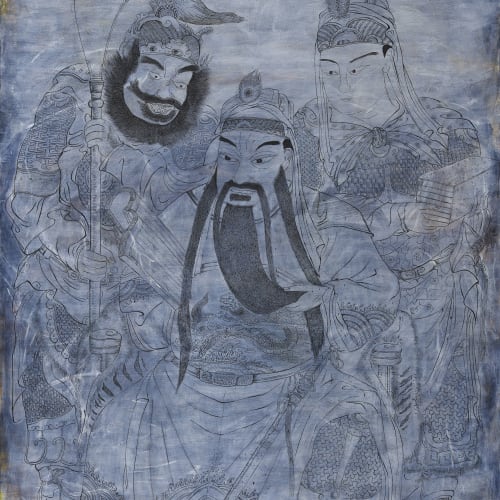Insights|3D33|LEE,Ming-Tse:The Play of A Taiwan Ranger
Encounter|3E07|Shimji Ohmali:Liminal Air space-time
Preview|27 - 28 March 2017
Public Days|29 - 31 March 2018
Shinji Ohmaki in CONVERSATIONS|Encounters in Encounters: When the Familiar Becomes Unfamiliar |
5-6pm, 29 March 2018
Infused with Wuxia legends/comics, nostalgia and recreation of folk objects, patterns of temple decoration, as well as his fascination with Chinese tea culture and the delight of a literati’s moral cultivation in traditional garden landscaping, Lee Ming-tse’s art reveals a seemingly surreal world with details and elements borrowed from the reality. A dimensional installation of shadow puppets, paintings revealing a mysterious dimension of fantastic chivalry, and a selection of recreations from found objects such as old toys, souvenirs and photos will be on display under the title of “The Play of A Taiwan Ranger” (遊俠戲影).
Lee places much emphasis on the intersection between art and daily life. Reflecting on past experience, he draws from personal memories to express a sense of wonder for the myth-like aspects of folk culture. Referencing ancient legends and myths, he explores and reflects upon his own life to transcend reality and the physical world. The amalgamation of illusion and reality constructs a mysterious dimension interweaving the past and the present, which interprets characteristics of Taiwan’s collective religion, life, and local customs in diverse ways. At the age of globalization, “The Play of a Taiwan Ranger” also reflects the nature of Taiwan being the unique culture variant, where various cultures and political powers have been confronted and blended with each other over the course of history.
In the ENCOUNTERS sector, Mind Set Art Center is pleased to present Japanese artist Shinji Ohmaki’s installation work “Liminal Air space-time”, which takes drapery as the medium to deliver the existence of gravity and time. The drapery floating in the air symbolizes the liminal space where departs from physical perception, in the meantime, creating a space closes to Japanese garden or Zen space for mediation. The work explores the in-between interface within two spaces of fundamental conflicts, such as “gravity and antigravity”, “light and shadow”, “interiority and exteriority”, as well as “visibility and invisibility”. It leads people into a new context of space and time, with the dance of drapery and the rhythm of breath. Meanwhile, the breath corresponds to the viewer’s own inhalation, reconnecting their body perception with the state of mind to reach profound contemplation.
Shinji Ohmaki will join a panel discussion entitled “Encounters in Encounters | When the Familiar Becomes Unfamiliar” to be held at 5 to 6pm, Thursday, 29 March, as part of Art Basel in Hong Kong’s CONVERSATIONS program.
About LEE Ming-tse
Born 1957 in Kaohsiung of southern Taiwan, Lee Ming-tse lived and worked in Taipei in the 1980s and moved back to Kaohsiung in the early 1990s until now. Lee gained his fame in his 1996 exhibition “The Front & Rear Ends of Formosa” held at Taipei Fine Arts Museum. He was invited to show in the second edition of Asia Pacific Triennial of Contemporary Art in Brisbane, and Taipei Biennial “The Quest for Identity” in Taipei Fine Arts Museum in the same year. The following year, the artist participated in “Taiwan: Facing Faces” at the National Pavilion of Taiwan in the 47th Venice Biennale. Kaohsiung Museum of Fine Arts held a major exhibition for Lee, “I Love Taiwan and Love Southern Taiwan Even More” in 2009.
About Shinji OHMAKI
Born in 1971, Shinji Ohmaki is an artist who represents the latest wave of Japanese art scene. He has gained his reputation through the vibrant play of space and materials. The artist specializes in blending his practice with characteristic design on architectural settings, which blurs physical borders and inject personal interpretation and philosophy of relationship between time and space. His works have been shown in Aichi Triennale 2016, Echigo-Tsumari Art Triennal 2015, “Simple Forms: Contemplating Beauty” at Mori Museum (2015), “Art Garden” at Singapore Art Museum (2012), Asia Art Biennial 2011 (Taichung), the 6th Asia Pacific Triennial of Contemporary Art in Brisbane (2009).
